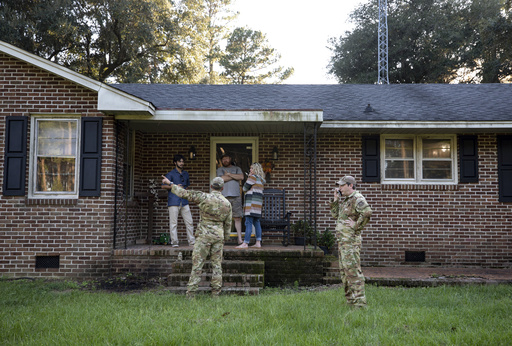
COLUMBIA, S.C. — An investigation by the Marine Corps has concluded that the pilot of an advanced F-35 fighter jet ejected from the aircraft prematurely, leading to the incident where the jet flew without a pilot for 11 minutes before crashing in rural South Carolina last year. The report released on Thursday indicated that the pilot’s decision to escape the aircraft was unwarranted, as the F-35 remained operational during this time.
The military faced significant challenges in locating the wreckage, which took over 24 hours to be found. The investigative document attributed the difficulties to the aircraft’s $100 million stealth capabilities, a malfunctioning transponder, and the jet’s low altitude during its flight, which allowed it to maintain stability autonomously without a pilot’s direct input.
The incident occurred on September 17, 2023, when the fighter jet was returning to Joint Base Charleston following a 50-minute training session amid reports of lightning and heavy rain. The pilot encountered an “electrical event,” which resulted in failures across multiple systems, including radios, transponders, and navigation instruments. Additionally, issues with the helmet display, which flickered intermittently, compounded the pilot’s confusion regarding his situational awareness.
Facing uncertainty about the jet’s orientation and which instruments were reliable, the pilot chose to eject. However, the Marine investigators determined afterward that it was unnecessary to leave the aircraft, as evidence indicated that the onboard computer was managing the flight. Remarkably, the F-35 continued to travel for more than 60 miles (100 kilometers) and remained in the air for an extended period without any piloting.
While the standby instruments continued to provide accurate information and a backup radio functioned partially, the report did not clarify what information was visible to the pilot prior to his decision to eject, as the crash recorder failed to capture that critical data.
The pilot, a 47-year-old male, survived the crash, landing in the backyard of a North Charleston residence where he requested the homeowner to call emergency services. He reported experiencing back pain but indicated he was otherwise unharmed. Information regarding the pilot’s identity was not disclosed within the extensive, and sometimes heavily redacted, report covering the incident.
The investigators’ wording within the report was notably cautious; they noted that the jet’s stealth capabilities could partially explain the challenges encountered in tracking the aircraft post-ejection. The disappearance of the jet sparked considerable media attention, leading to social media memes and creative representations of the aircraft on missing person posters.
The peculiar circumstances surrounding the crash were further emphasized in the military’s formal reports, which included a notable situation report that prioritized the urgent search for the missing fighter jet. Ultimately, the jet went down in remote Williamsburg County, and recovery efforts, which involved gathering debris and clearing hazardous materials, took 17 days and incurred a financial burden exceeding $2.1 million.
